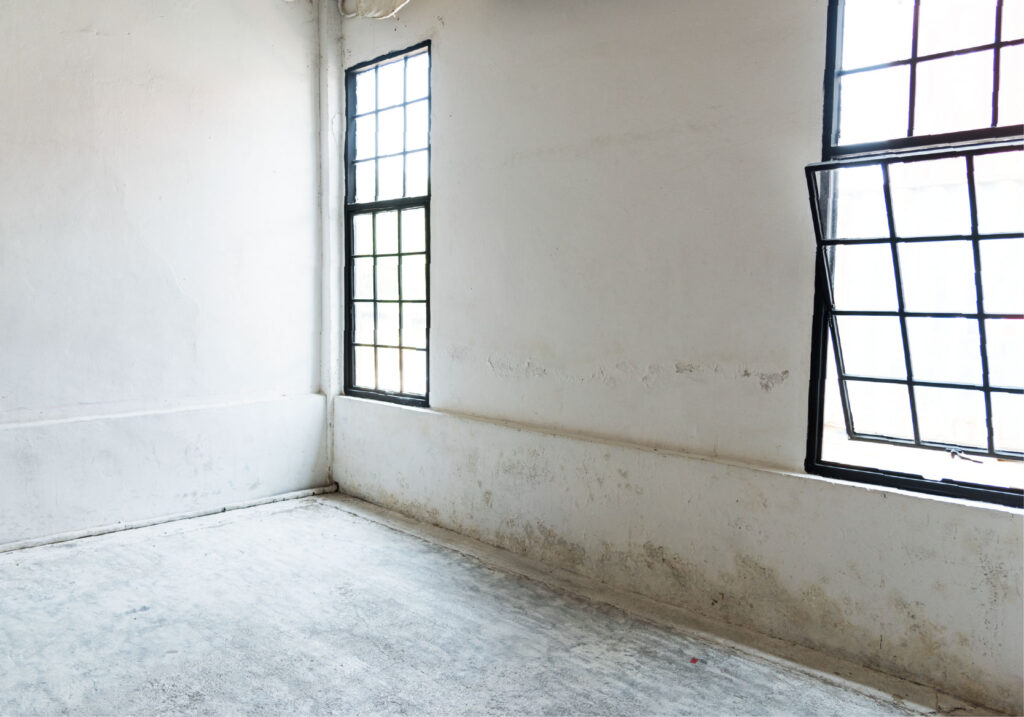Your walls do more than hold up your home. They can also hide the clues to what’s happening inside it. As inspectors, our job is to help clients see beyond the paint and plaster, separating serious concerns from harmless imperfections. Some issues signal costly repairs ahead, while others are purely cosmetic and easy to fix.
In our last edition of Inspector Insights, we explored the problems most often found in attics. This time, we’re shifting our focus to one of the largest features in your home, and the telltale signs it reveals about your property’s health. Let’s take a look at your walls.
#1: Cracks in Your Drywall
Most interior walls start with a wooden frame, then get covered with drywall (also called gypsum board or sheetrock). Drywall is affordable, easy to install, and fire-resistant, but it’s not the most durable material, so dings, dents, and minor cracks are common. Most of these blemishes come from everyday wear or issues during installation–quick, inexpensive fixes that shouldn’t cause too much alarm. But not all cracks are created equal.
Diagonal cracks that start at the corners of doors or windows can point to foundation settlement: a serious structural issue that, in extreme cases, can run $10,000 or more to repair (learn more from construction experts at This Old House). When inspectors see these, we look closely to determine whether it’s simply cosmetic or a sign of something bigger.
#2: Signs of Bulging
Bulges or areas of swelling in your walls are another aspect that inspectors will certainly call out, and aren’t something homeowners should ignore. While they’re sometimes just the result of sloppy installation, they can also point to structural trouble. Wall studs — the vertical wood supports inside your walls — can buckle if installed incorrectly, sized too small for a remodel, or weakened by moisture damage, pest activity, or mold growth.
Even perfectly sound framing can appear to bulge if something is happening behind it. When paired with discoloration or staining, bulging often means water is getting in, whether from a leaky roof, damaged exterior wall system, or failing plumbing.
Water is one of a home’s worst enemies because it can quietly damage multiple systems before it’s noticed. While some bulges are purely cosmetic, others are early warnings that a deeper investigation is needed to avoid costly repairs down the line.
#3: Framing Material Issues
Cracks and bulges can be spotted after a home is built, but some problems are hidden from view once the walls go up. The truth is, new homes have just as many framing issues as resale homes – from lumber damaged during storage or transport to mistakes made during installation.
The best way to catch these problems early is through phase inspections, especially the predrywall inspection. During this stage, the wall framing is still exposed, allowing a professional home inspector to check that materials are the correct size, free from defects, and properly installed to support the home for decades to come.
#4: Crown and Base Molding Gaps
Not every wall issue means a major repair bill. The decorative trim between walls and the ceiling or floor (known as crown and base moldings) can develop small gaps and cracks over time. In fact, we see this so often during inspections that it’s almost expected by the time new homeowners move in.
These gaps sometimes make buyers worry about settling, especially if they’ve also noticed drywall cracks. In most cases, though, it’s just seasonal expansion and contraction of the materials. Although it may be an eyesore, it’s purely cosmetic and easy to fix. As home inspectors, we will still point this out during inspections to reassure buyers and keep minor concerns from turning into major anxiety.
#5: Malfunctioning Doors and Windows
Doors and windows are part of a home’s interior wall systems, and inspectors always test them for proper operation. A sticking door might just be annoying on a day-to-day basis, but it can also serve as a clue pointing to foundation settlement. As always, we endeavor to spot potential structural problems while ensuring the home will be comfortable to live in.
Windows bring their own set of concerns, especially when it comes to sealing. Poorly sealed windows can let in moisture, create drafts, and drive up energy bills. Signs to watch for include condensation, fogging, peeling paint, and staining, which warrant resealing and will certainly get called out in an inspection report.
How to Reveal Hidden Issues in Your Wall System
Interior walls can show a variety of cosmetic flaws and structural red flags, but some problems stay hidden even after a thorough visual inspection. For buyers who want extra peace of mind, thermal imaging is a powerful tool.
Thermal imaging cameras (also called infrared cameras) translate temperature changes into color-coded images called thermograms. These can reveal what the naked eye can’t see, including missing insulation, active leaks, electrical hot spots, and much more. With this technology, inspectors can pinpoint problems early, often before they cause visible damage.
If you’re buying a home, ask whether your inspector uses infrared technology or offers it as an add-on service!
From the foundation to the roof, NPI is your go-to source for expert home maintenance insights. Follow the NPI blog to catch the next Inspector Insights and learn what to look for in other key areas of the home.
Looking for a quality home inspector near you? Use our search tool and schedule an inspection today.



